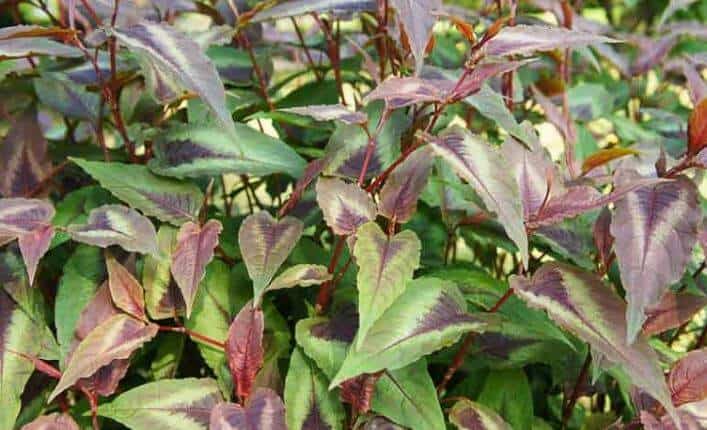Last Updated on January 5, 2023 by a Friendly Gardener
The Persicaria Microcephala ‘Red Dragon’ may seem like a mouthful, but the herbaceous perennial Red Dragon plant is more commonly known as Knotweed, Buckwheat, Smartweeds, or Fleeceflower. It is a member of the Polygonaceae plant family and is native to grassy zones and forests in China.
This particular cultivar was discovered to be a natural mutant within a crop of Persicaria Microcephala that was being cultivated in Nanjing, China to use in medicine. The first known asexual reproduction of this cultivar took place in Indiana, USA, in 1997 when Mr. Greg Speichert used cuttings.
Known for its unique leaves more than for its flowers, the foliage is lance-shaped and pointed and features a green and maroon design and a pale creamy margin. The deciduous Red Dragon grows in an upward pointing clump. It can be grown alongside contrasting foliage plants or be container cultivated to appreciate by itself.
A vigorous, well-behaved semi-evergreen plant, young Red Dragon plants begin with red stems and foliage appearing as purplish-brown and feature a bluish chevron at their center. These initial hues will mute to a purplish silver and finally turn green with maturity. The Red Dragon produces clusters of tiny white flowers that are similar to Baby’s Breath beginning in mid-summer and continuing till the beginning of autumn. While often employed as a ground cover, it spreads more slowly than other similar species.
The Red Dragon plant can grow from 2.5 to 3 feet in both height and width. It can grow large with time but does not run. It is often employed for garden borders, in garden beds, or in containers both alone and with other plants.
Red Dragon Plant Care
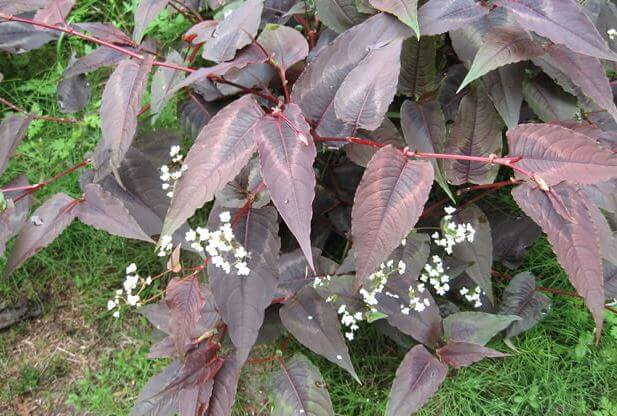
With proper growing conditions, the red dragon really asks very little of gardeners and is quite resilient. It will attract both bees and butterflies and is a hardy plant even in the winter seasons. Flowering will take place beginning in July and continue through to October. As a moderately slow grower, you can expect this plant to take from 2 to 5 years to reach full maturity.
Soil
The Red Dragon plant will grow in just about any moisture-retentive soil type that is well-draining. They do manage well in heavy clay soils as long as the soil is not consistently soggy or wet. Soil pH can be acid, alkaline, or neutral.
Light
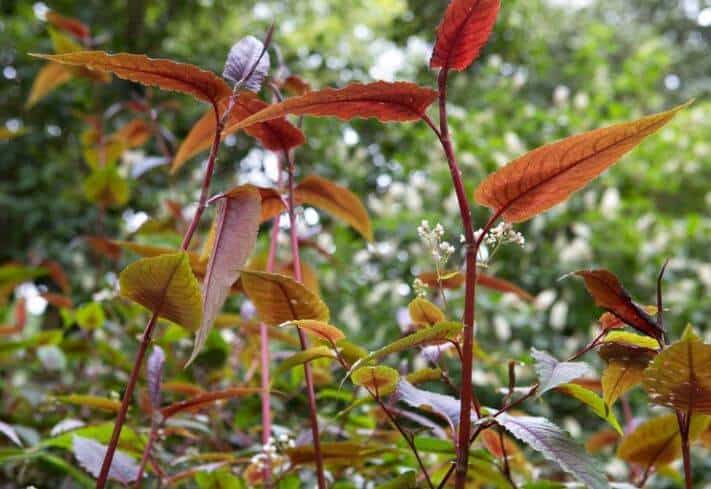
These plants grow well in light conditions that range from partial shade to full sun as long as it is not exposed to harsh afternoon sun. Foliage color can intensify with full sun. in regions with particularly hot summer sun, they will need some shade.
Water
Red Dragon plants need evenly moist soil beds, so water thoroughly and on a regular schedule particularly during the first year. These plants prefer consistently damp soil conditions. They are able to tolerate standing water for short periods which explains their tolerance to heavy clay soil.
Temperature
A frost-hardy plant, the Red Dragon can be cultivated outdoors in USDA hardiness zones 4 through 9.
Feeding
While not in need of regular fertilization, the Red Dragon plant will benefit from compost being added to the garden bed or container soil at the moment of planting, as well as a top dressing every spring and autumn.
Pruning

This is considered a low-maintenance plant, so your Red Dragon will not specifically require pruning. It should be trimmed back considerably toward the end of winter or at the beginning of spring before the new growing season starts. If you feel your plants need trimming, they can be trimmed back at any time of year. Ideally, congested clumps will need to be divided every three years.
Red Dragon Plant Propagation
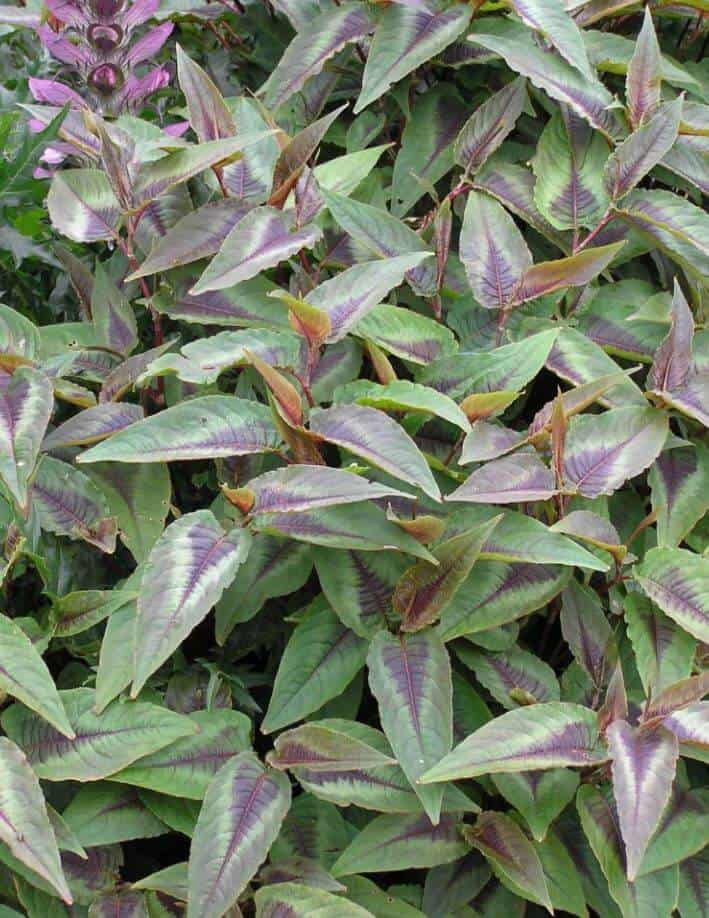
Red Dragon plants can be propagated by using softwood stem cuttings or by division. The best time to plant Red Dragon is in the springtime or in the autumn.
When using softwood cuttings for propagation
- Snip a stem just above a leaf on the mother plant.
- Cuttings should measure approximately 4 inches in length. So cut your chosen stem to 4 inches just below a leaf node. Remove all foliage on the cutting’s bottom half.
- Cover the cut end in rooting hormone.
- Insert the cuttings in containers of a moistened blend of perlite, peat moss, and coarse sand in equal parts.
- Put canes or straws around your plant and cover it with a plastic bag.
- Place it in indirect light in a warm spot.
- Keep your cutting moist until new growth appears. It can then be transplanted.
When dividing plant clumps
- Dig up the parent plant on a cloudy day so that there is no risk of it drying out. Plant on dividing when your plant is not flowering so that the plant can channel its energy to producing new roots.
- Lift your Red Dragon plant out of the soil bed and remove excess dirt from around the root system.
- Pull roots apart, or cut them with a sharp sterile knife,
- Each section should have at least three shoots and some healthy roots.
- Keep your divided sections moist until you replant them.
You can also propagate the Red Dragon plant through layering. However, layering will only work if the soil bed is kept constantly moist. You can simply bend a stem using a U-shaped wire position and pin the stem against the ground six inches to a foot from the stem tip. Cover the point of the stem that touches the ground with soil. Position the tip vertically and stake it into place. The plant may need as long as a year for new roots to develop.
Propagating the Red Dragon with seeds is impossible as seeds are sterile and of no use when propagating.
Red Dragon Plant Container Cultivation
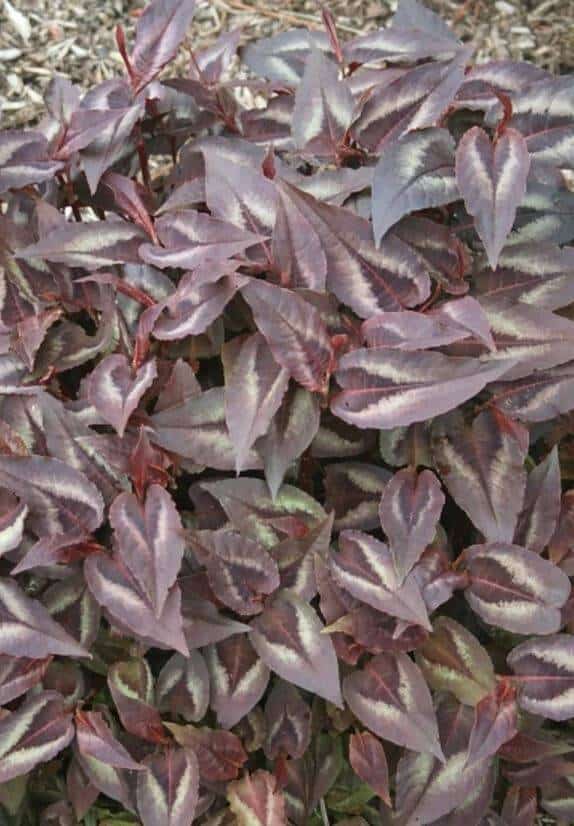
Red Dragon plants will do well in any size container as long as the watering is consistent. This plant does not like to dry out, and its success in a pot will depend on the soil being kept consistently moist.
Red Dragon Plant Toxicity
There has been no reported Red Dragon plant toxicity to birds, dogs, cats, horses, livestock, or humans, so if you have pets or children, it’s perfectly safe to plant it in your yard.
Red Dragon Plant Problems
The Red Dragon is virtually pest free and resistant to diseases. It also is resistant to local wildlife like deer and rabbits.

